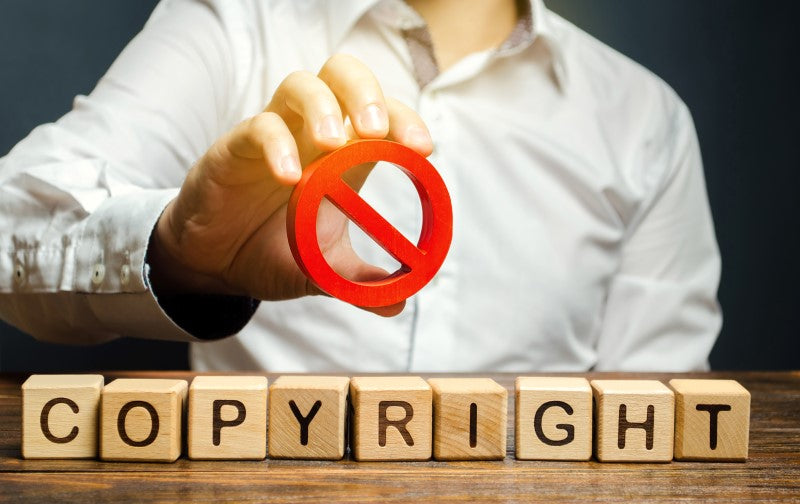
A legal trap that 80% of online shop owners don’t know - Tips to avoid copyright infringement traps
Some online shop owners choose to design their own trademarks, logos or promotional materials, but inadvertently infringe on the copyright without knowing it, until they receive a lawyer's letter, they are surprised!
Since all the promotional materials used in the online store are publicly displayed or advertised, the owner of the online store or related designers must first confirm that the resources used (such as fonts, photos, images, videos, etc.) comply with the copyright regulations. Many online shop owners are accustomed to directly searching for materials on the Internet, and use their resources for commercial purposes without the permission of the copyright owner or without the purchase of the copyright. Online shop owners can be prosecuted and fined for "copyright infringement"!

Before using any free online materials for commercial purposes, as an online shop owner, you must make sure that all materials meet one of royalty-free, creative CC or public domain.
- Royalty-free: also known as buy-out authorization, you can use it for unlimited times, including commercial use, as long as you buy the copyright for a one-time payment.
- Creative Commons: Creative Commons is a non-profit organization that provides free resources to individuals and even companies to use its licensed works. However, it must be noted that some resources are required to indicate the source, and some resources are also prohibited from commercial use.
- Public Domain: Works whose copyrights have expired, or works whose creators voluntarily open the right to use them to the public, including commercials.
As for the use of fonts, online shop owners or online shop designers must confirm whether the fonts have "SIL Open Source Font License" (OFL) or GNU "GNU General Public License" (GPL). These two authorized fonts are available for commercial use all over the world. Some platforms, such as Google Fonts, will state that all fonts on their platforms are allowed for commercial use.

Many shopkeepers don’t know that using colors or combinations of colors can also make you fall into the trap of copyright infringement. Pantone once created the exclusive color number "Tiffiany Blue" for the famous jewelry brand Tiffany & Co.. The color code PMS 1837 is a color trademark of Tiiffany & Co., so it will not appear in Pantone's swatch book.
In addition, color combinations may have already been registered as trademarks. It is like the representative color "green, white, and blue" of FamilyMart in Japan. Because the trademark is very well-known and highly recognizable, it has been approved to be registered as a color trademark in Japan. In addition to FamilyMart, the "green, red, and white" combination of 7-11 convenience store is also a famous example of color combination trademarks.
According to Section 63 of the Trademarks Ordinance, Chapter 559 of the Laws of Hong Kong-Well-known Trademarks: Article 6bis of the Paris Convention (Note 1), even if the trademark is not registered in Hong Kong, the court may still have the opportunity to say that the trademark is a well-known trademark. The right to prohibit any business from using similar trademarks to operate similar businesses in Hong Kong. Therefore, when designing a logo or a trademark, you should try to avoid using the same color or design with large companies of the same business nature.
Note 1: Chapter 559, Article 63 of the Trademarks Ordinance-Well-known Marks: Article 6bis of the Paris Convention
(1) Subject to the provisions of Article 59 (the effect of tacit consent), the owner of a trademark that is entitled to be protected as a well-known trademark under the Paris Convention can provide the same or similar goods or services in Hong Kong. In the case of using any trademark that is identical or similar to his trademark or a trademark whose main part is identical or similar to his trademark, and the use is likely to cause confusion to the public, the owner has the right to obtain an injunction Restrict the use of the trademark in Hong Kong for such goods or services.
If you have any questions about relevant laws, please consult professional legal personnel.




